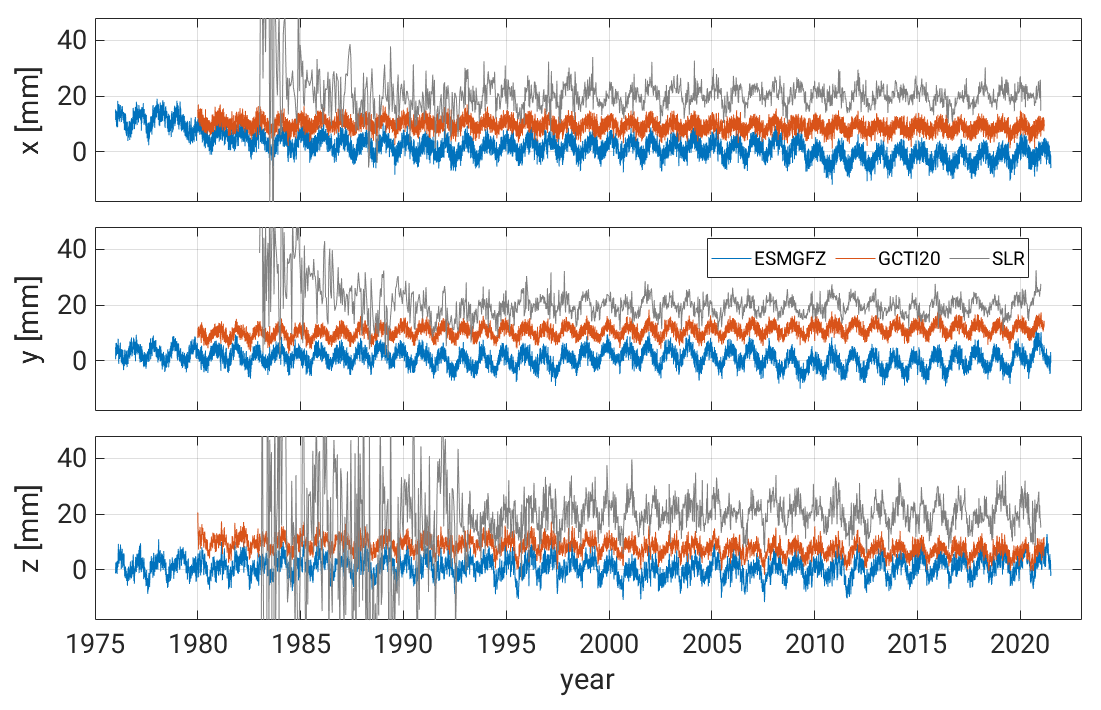Assessment of non-tidal loading data for DGFI-TUM’s upcoming ITRS 2020 realization DTRF2020

Site displacements caused by non-tidal loading (NTL) are among the major limiting factors for the accuracy of today's reference frames. On the occasion of the current 2020 realization of the International Terrestrial Reference System (ITRS), we investigated the NTL models of two providers with respect to their suitability for the determination of long-term stable reference frames.
As one of the three ITRS Combination Centers of the International Earth Rotation and Reference Systems Service (IERS), DGFI-TUM is in charge of realizing the ITRS in regular intervals. Our upcoming solution, the DTRF2020, will correct for site displacements caused by mass load changes of atmosphere, ocean and hydrology.
Since there is no conventional model for the application of NTL yet, the best approach and data for the DTRF2020 needs to be investigated. The appropriate modeling of NTL is crucial to our ITRS realization as accounting for NTL site displacements will affect the estimated coordinates of reference points (i.e., geodetic observatories), but should not affect the realized geocenter. We analyzed two sets of site displacements based on different geophysical models. One is the Global Geophysical Fluid Center contribution (labelled GCTI20) to the ITRS 2020 realization, the other is the operational NTL data from the Earth System Modelling group of the Deutsches GeoForschungsZentrum (ESMGFZ; already applied at DGFI-TUM e.g. for VLBI analysis). Among other things, we compared the displacements with time series of GNSS station residuals and calculated the contributions to geocenter motion (see Figure).
While the correlations are satisfactory, neither data set could be identified as having the better agreement with the residual GNSS station positions. The main differences between GCTI20 and ESMGFZ are the hydrological loading components and the presence of artificial trend changes in ESMGFZ site displacements (and hence geocenter motion contributions). The latter is a hindrance to realizing a secular reference frame. As a result, GCTI20 will be applied for the DTRF2020. The study is published in the article Comparison of non‐tidal loading data for application in a secular terrestrial reference frame (Earth, Planets and Space, 2022, DOI: 10.1186/s40623-022-01634-1, [PDF]).
Arcisstraße 21
80333 München